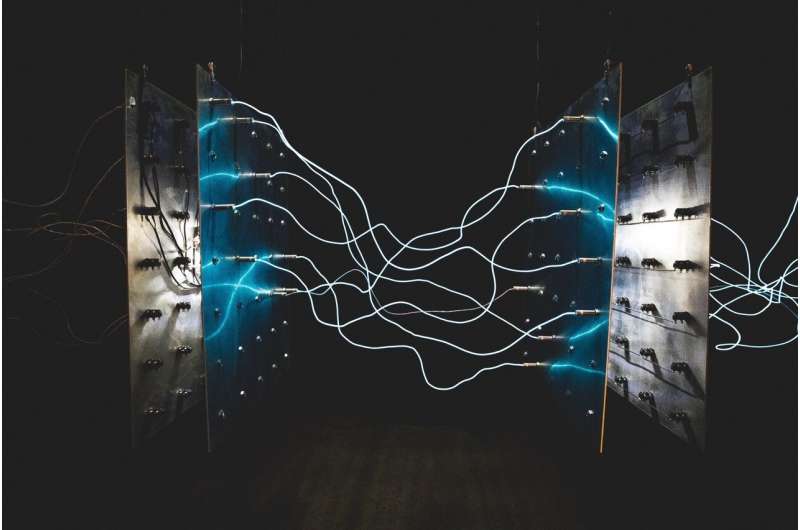Scientists electrify aluminum to speed up important process

Scientists have found a way in the laboratory to shorten the time it takes to create a key chemical used to synthesize a variety of medications, fertilizers and other important substances.
The finding could make a number of industrial manufacturing processes cheaper and more efficient. And all it takes, essentially, is electrifying an aluminum container that includes the right chemicals.
In a study recently published in the Journal of the American Chemical Society, the research team described how to shorten a process to turn one chemical—triphenylphosphine oxide—into another chemical—triphenylphosphine. Triphenylphosphine is an important chemical for the manufacturing of materials that improve farming or can be used as pharmaceuticals.
"It might make it easier or cheaper to produce certain medications, materials, agrochemicals—essentially all organic synthesis," said Christo Sevov, an assistant professor of chemistry at The Ohio State University and senior author of the study.
Manufacturers already are making this conversion happen, but the process by which they do it is lengthy and expensive. The process also uses a substance, phosgene, that is toxic to humans.
"Nobody wants to use phosgene—it's incredibly toxic—but you need to use it in order to reactivate the chemicals—and you need a lot of it," Sevov said. Phosgene is a high-energy chemical; that high energy is necessary to convert triphenylphosphine oxide to triphenylphosphine, he said.
The current conversion process also produces carbon dioxide—something chemists have been trying to figure out how to limit.
The study published by Sevov and his research group shows that the energy needed to allow that conversion can happen by sending an electrical charge through an aluminum container. Doing so provides enough energy to allow aluminum to break one of the chemical bonds in triphenylphosphine oxide—essentially, to strip oxygen away from that molecule—and to leave behind just triphenylphosphine.
"We just cut the top off an aluminum soda can and poured everything we needed in there. Then we clipped a couple of electrical leads to the wall of the can and then that was the electricity we needed to make the conversions," Sevov said.
Chemists have been trying for decades to shorten this conversion process and to find a way to achieve the conversion without using toxic chemicals. Sevov's research group, which studies the interactions between electricity and chemicals, discovered this shortcut almost by accident, while working on another experiment.
Shuhei Manabe, a researcher in Sevov's lab, noted that introducing aluminum and electricity allowed the team to convert one chemical to the other with very little waste.
Sevov said the simplicity of that process was surprising to the whole research team.
"Usually, you get a whole mess of byproducts when you convert one to the other—that's why nobody does this in a single step," he said. "And it's really the steps in the conversion process that make things expensive. If you can cut steps, that makes the final product much cheaper."
More information: Shuhei Manabe et al, Direct and Scalable Electroreduction of Triphenylphosphine Oxide to Triphenylphosphine, Journal of the American Chemical Society (2020). DOI: 10.1021/jacs.9b12112
Journal information: Journal of the American Chemical Society
Provided by The Ohio State University




















